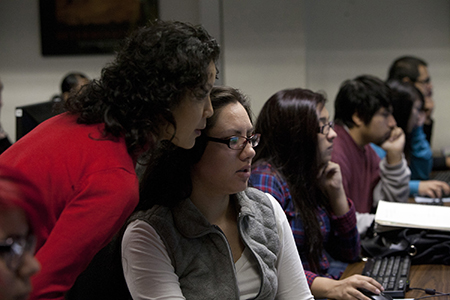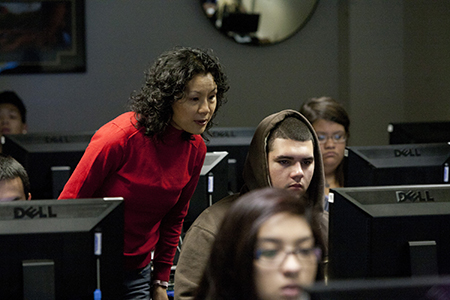User Case Study:
Pasadena Professor Uses Maple to Transform Students’ Engagement with Math







Challenge
Professor Xiaodan Leng of the Pasadena City College found that while her students were, on the surface, following her teaching, they were not gaining a deep understanding of complex concepts. Students retained the information they needed for tests and exams but were not grasping the underlying concepts they would need when joining the workforce.
Solution
To minimize the gap in understanding, Leng integrated Maple into her teaching. Maple’s clickable, easy-to-use interface allows students to study and understand key concepts without having to focus on the learning tool itself. Leng found that students adapted well to Maple’s notation, which was similar to what they found in textbooks. She developed interactive tutorials for students to complete on their own, as well as interactive demonstrations for discussion and investigation as a group in class.
Result
The level of understanding among Leng’s students greatly increased with the use of Maple. Results showed student performance improved by 50% after Maple was integrated as a key learning tool. Other professors noticed the impact Maple had on Leng’s students and are investigating using the software in their own courses.
Pasadena City College is the third largest community college in the United States. Each semester, the school enrolls 30,000 students from diverse ethnicities, socioeconomic backgrounds and ages. With 75% of the school’s enrollment taking place in math classes, math professors like Xiaodan Leng play a pivotal role in helping students work towards their future careers. To prepare her students, Leng’s goal as an instructor has always been to develop skills in her students that would be useful after they graduate.
However, like many mathematics instructors, she faced an all-too-familiar problem in her classes. She found that her students, though eager to learn, accepted what she taught without gaining a deep understanding of complex concepts. Many students studied and learned what they needed to know for a test or exam, but they didn’t learn the underlying concepts they would need when they join the workforce. “So many students are used to being told how to do mathematics. They listen and accept what you say, but they are left with a gap in their understanding,” noted Leng, drawing on her 20 years of experience as a mathematics instructor.

Improve your students' performance by integrating Maple into your classroom
 The impact on some students has been so great that they have taken to career paths that involve math skills. Over the years, students have begun pursuing technical fields such as Computer Science or other Science-related subjects after taking classes in which Leng made Maple a core tool. Other instructors have observed the impact Maple has in Leng’s classes, and many are asking to learn more. Maple is expanding to other faculties on campus, and training is being organized for Leng’s colleagues.
The impact on some students has been so great that they have taken to career paths that involve math skills. Over the years, students have begun pursuing technical fields such as Computer Science or other Science-related subjects after taking classes in which Leng made Maple a core tool. Other instructors have observed the impact Maple has in Leng’s classes, and many are asking to learn more. Maple is expanding to other faculties on campus, and training is being organized for Leng’s colleagues. Ready for the next step?
Contact us for Maple pricing details.
Products
Industry/Application Area
Highlights